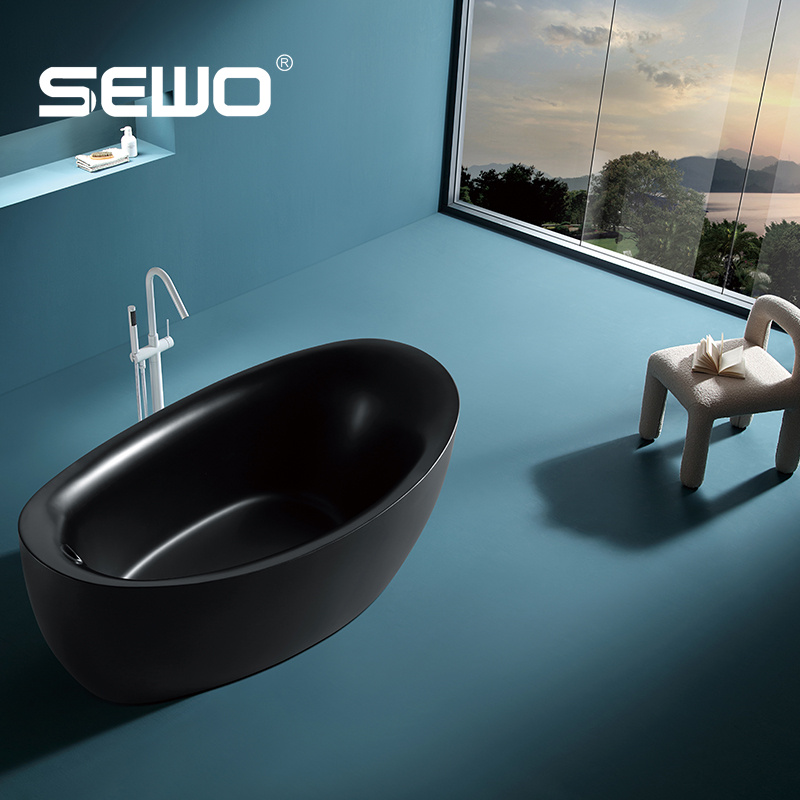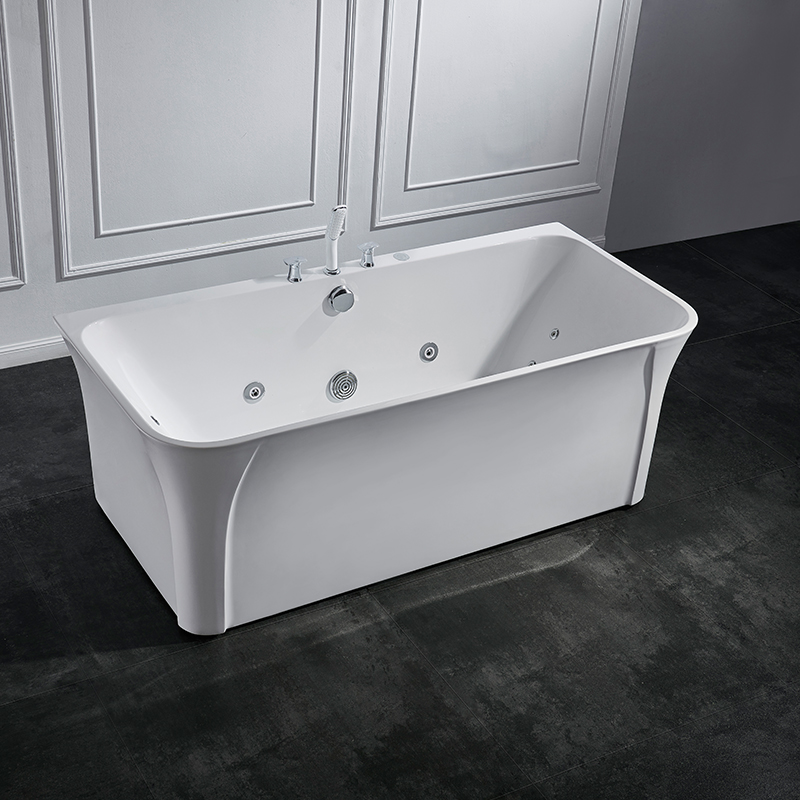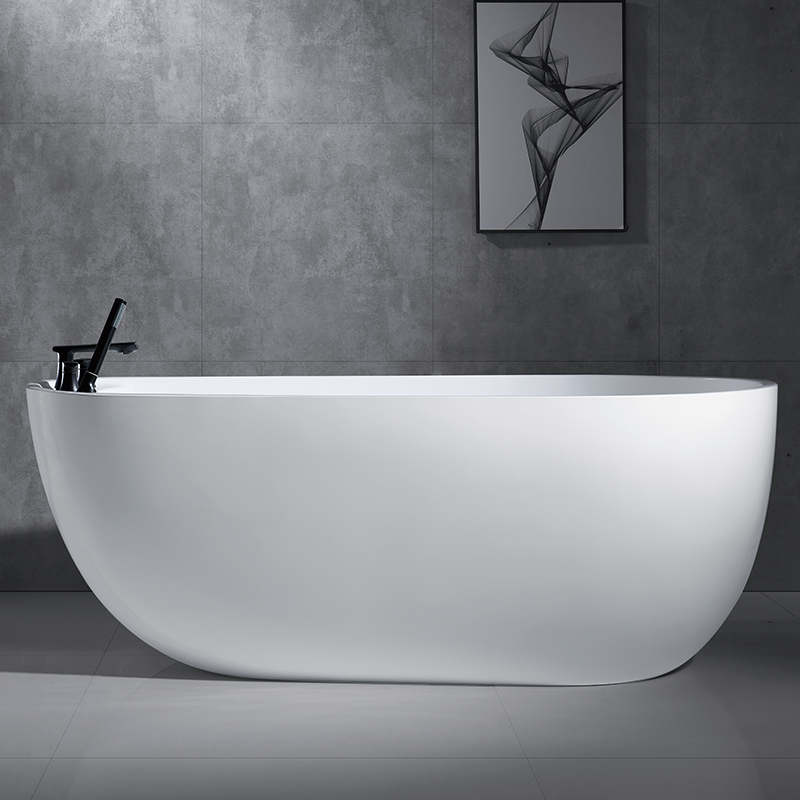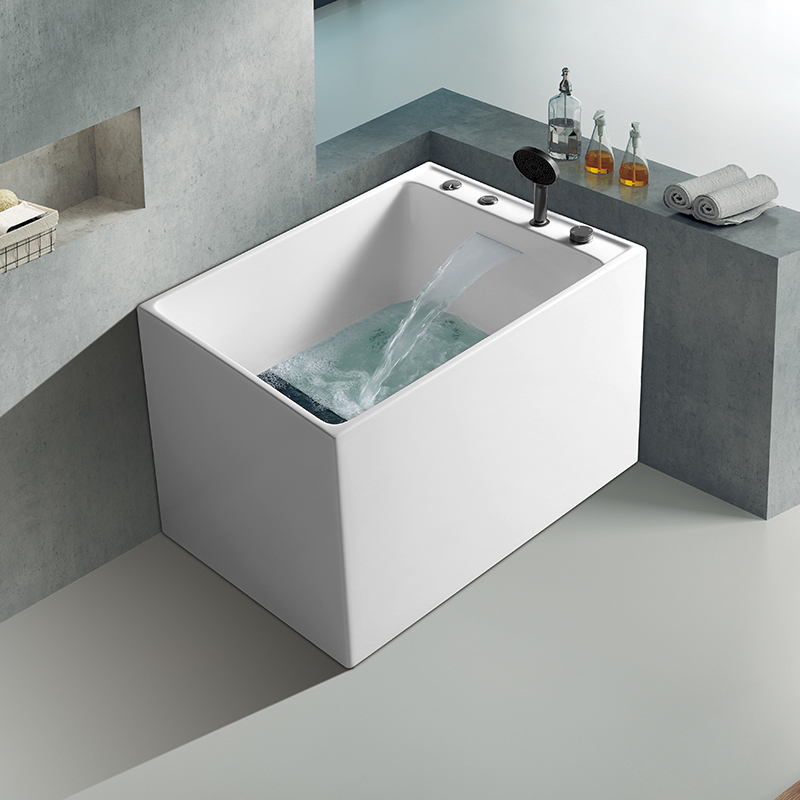Acrylic bathtubs are made of artificial organic materials. They are characterized by rich shapes, light weight, good surface smoothness and low price. However, due to the disadvantages of artificial organic materials such as poor heat resistance, poor pressure resistance, poor wear resistance and easy surface aging, the surface of acrylic bathtubs rarely does not change color after more than three years of use.

However, some brand manufacturers use imported high-brightness and high-hardness acrylic sheets specifically designed for bathrooms during production, which to a certain extent overcomes some of the shortcomings of acrylic. If consumers think they use bathtubs less frequently when making a purchase, acrylic bathtubs, due to their good cost performance, are still quite suitable for such consumers.
Selection skills:
Check the glossiness. The quality of the material can be judged by looking at the surface luster. It is suitable for any type of bathtub material.
Test its firmness by pressing it with your hand or stepping on it with your foot. The sturdiness of a bathtub is related to the quality and thickness of the material. It cannot be seen by the naked eye. You need to try it yourself. Under the condition of gravity, for example, when you stand in it, do you feel a sinking sensation.
Feel the surface smoothness. It is suitable for steel plate and cast iron bathtubs, as both types of bathtubs need to be enameled. If the enameling process is not good, fine ripples will appear.
Sound. When purchasing a high-end bathtub, it is best to "test the water" at the time of purchase and listen to the sound. If the motor noise of the massage bathtub is too loud, you won't be able to enjoy it; instead, it will become a burden.
If you want to choose a good bathtub, you should start with its material. Bathtubs can be classified by material into acrylic bathtubs, ceramic bathtubs, wooden bathtubs, etc. Acrylic bathtubs are a commonly used type of bathtub because they are easy to process, come in a variety of styles, are lightweight and do not rust, are easy to transport and install, are relatively easy to keep warm, are less likely to be bumped into when in use, and are relatively inexpensive.
If you want a comfortable bathing experience, a bathtub is a good choice. But nowadays, there are various materials for bathtubs. Which one is suitable for you? 1. Acrylic bathtub: This is the most frequently used bathtub material by modern people. Acrylic bathtubs are made of organic materials. They come in a variety of shapes, are lightweight, have a smooth surface, are low in price and have good heat preservation effect. The drawback is that their surface is easily scratched by hard objects. Nowadays, some manufacturers, in order to overcome the drawback of acrylic being not wear-resistant, have adopted imported high-brightness and high-hardness acrylic sheets specifically designed for bathroom use, which to a certain extent has overcome these shortcomings. 2. Iron cast bathtub: This type of bathtub is made of cast iron and covered with enamel on the surface, so it is very heavy, durable, and not prone to noise. It is also easy to clean. However, the drawback is that it is too heavy, making it difficult to install and transport. Moreover, iron cast bathtubs usually have a single shape. Due to its complex casting process, the price is also very high. 3. Wooden bathtub: This type of bathtub made of solid wood often has strong heat preservation properties. The bathtub body is relatively deep, which can fully moisten the body. Wooden bathtubs are generally made of hard and dense wood. Currently, cedar wood is the most common on the market. Solid wood bathtubs can give people a refreshing feeling. Moreover, bathtubs made of solid wood are easy to clean, natural and environmentally friendly. The downside is that they are slightly expensive and require maintenance; otherwise, they may deform and leak. The daily maintenance of wooden bathtubs is also very simple. Solid wood bathtubs like moisture and are afraid of dryness. They should be frequently soaked in clean water and avoid direct sunlight. 4. Steel plate bathtub: This type of bathtub is made of traditional bathtub materials. It is formed by stamping special steel plates and then treated with enamel on the surface. It features wear resistance, heat resistance and pressure resistance. The price is relatively low, and the weight is between that of cast iron bathtubs and acrylic bathtubs. It is lightweight and easy to install. Its drawback is that its heat preservation effect is not as good as that of iron cast bathtubs, and the noise when filling water is relatively large. However, due to its overall high cost performance, many consumers will choose steel plate bathtubs first when decorating. 5. Ceramic bathtubs: Ceramic bathtubs are made of ceramic, and due to their heavy weight and fragility, they have gradually been replaced by acrylic, cast iron bathtubs and steel plate bathtubs, and are tending to be phased out.




